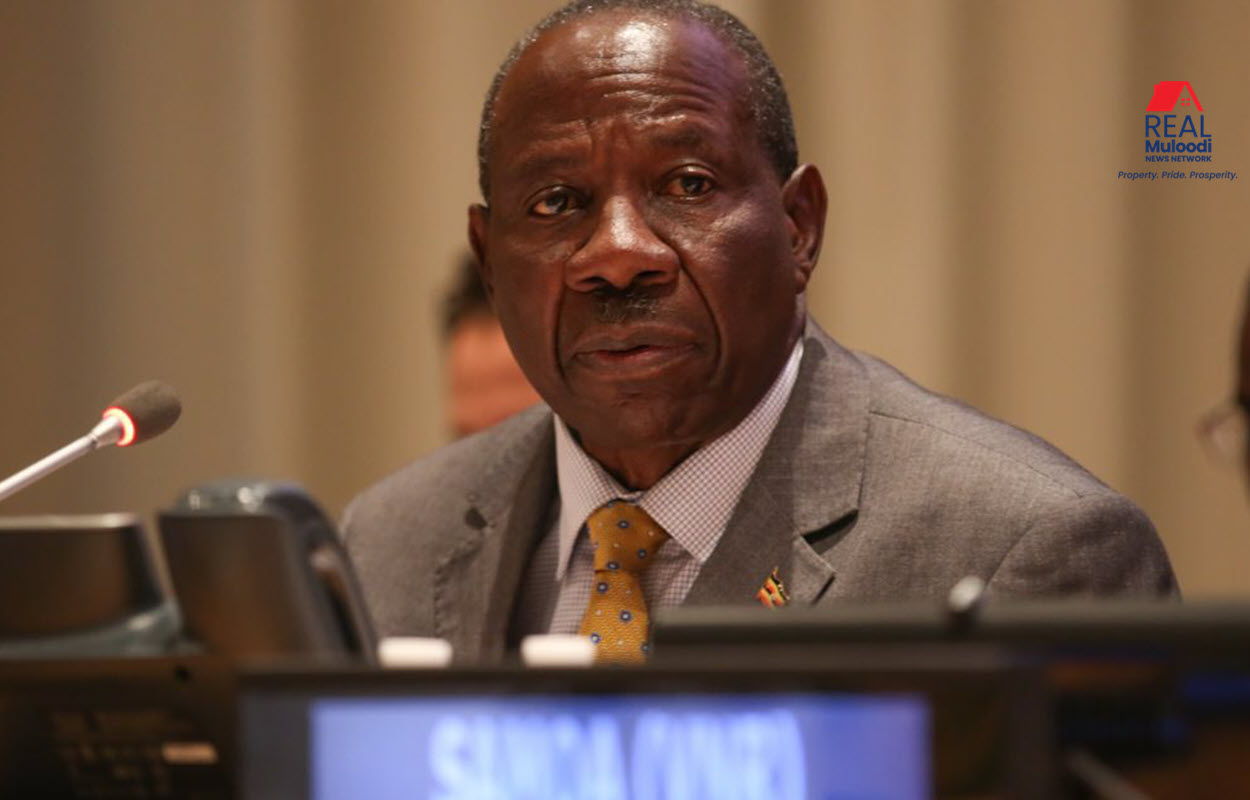UGANDA, Kampala | Real Muloodi News | Finance Minister Matia Kasaija has expressed alarm over the rapid rise in debt levels, which have now surpassed the 50% threshold of gross domestic product (GDP). Uganda borrowed immense sums to shore up budget shortages and COVID-19 related expenses in the just-concluded financial year, pushing debt levels above the 50% safety valve.
Ministry of Finance expects public debt to GDP to rise to 51.9 per cent in the 2021/22 financial year.
During a press briefing in Kampala, Mr Kasaija said he was uncomfortable with the current public debt levels.
“We are at a level which makes me uncomfortable. Once you see you have gone beyond 50 per cent, it requires one to be concerned. So we are conscious and extremely concerned about our public debt,” Mr Kasaija said.
Mr Matia Kasaija recently reported to Parliament on Uganda’s debt stock, saying that as of December 2020, total debt stock was almost USh 65.83 trillion, up from USh 49.0 trillion in December 2019.
Debt levels have been steadily rising since 2019, from 38 per cent in 2019 to 41 per cent in June 2020, before hitting 47.2 per cent in December 2020. Mr Kasaija explained the rise was because of increased foreign and local borrowing to minimise the socioeconomic impact of Covid-19.
In April this year, while addressing the Parliamentary Budget Committee, Mr Kasaija urged Ugandans to work harder to increase domestic revenue.
“Ugandans should work very hard so that the government can get enough tax, that is the only way in having the economy become more productive so that tax revenue increases, this is the answer.” Mr Kasaija told the committee.
Currently, out of a population of 45 million people, only one million Ugandans pay taxes. This is despite a large percentage of the population being engaged in economic activities.
Through the Domestic Revenue Mobilisation Strategy (DRMS), the government targets to increase domestic revenue by 0.5% points per annum.
Mr Kasaija said that money to deal with issues like Covid-19 would be raised through cuts to budgets for non-essential services like travel, conferences, and lodging, to mention but a few.
Experts have previously warned of rising debt whilst the government has continuously insisted that the amount was within manageable limits. Despite Kasaija’s intentions to expand the domestic tax net, he is unlikely to raise the revenue to fill the gap from a population that is already burdened by many taxes.
The government faces challenges of balancing the budget, which is currently in a massive deficit. Out of the USh 44 trillion allocated for the next financial year, USh 21 trillion will go toward servicing the external debt.
Given the expectation that domestic revenue will reach approximately USh 21.6 trillion, the country would spend 96 per cent of its yearly domestic revenue servicing external debt.
Uganda owes 64 per cent of its total debt to multilateral creditors including the International Development Association (IDA), China Exim Bank, African Development Bank, International Monetary Fund, and the World Bank. We owe the rest to bilateral lenders such as Japan, the European Union, and the United States of America.
READ MORE LIKE THIS:
Bank of Uganda Warns Finance Ministry Over High National Debt Levels



